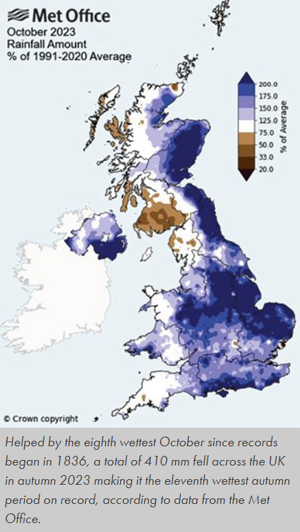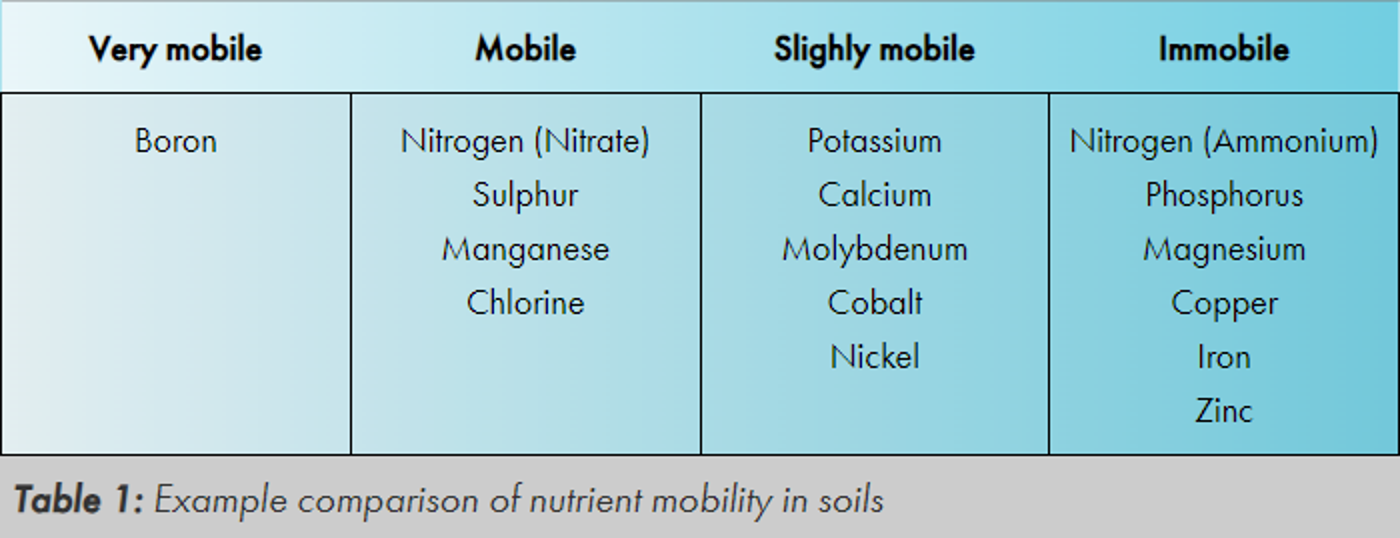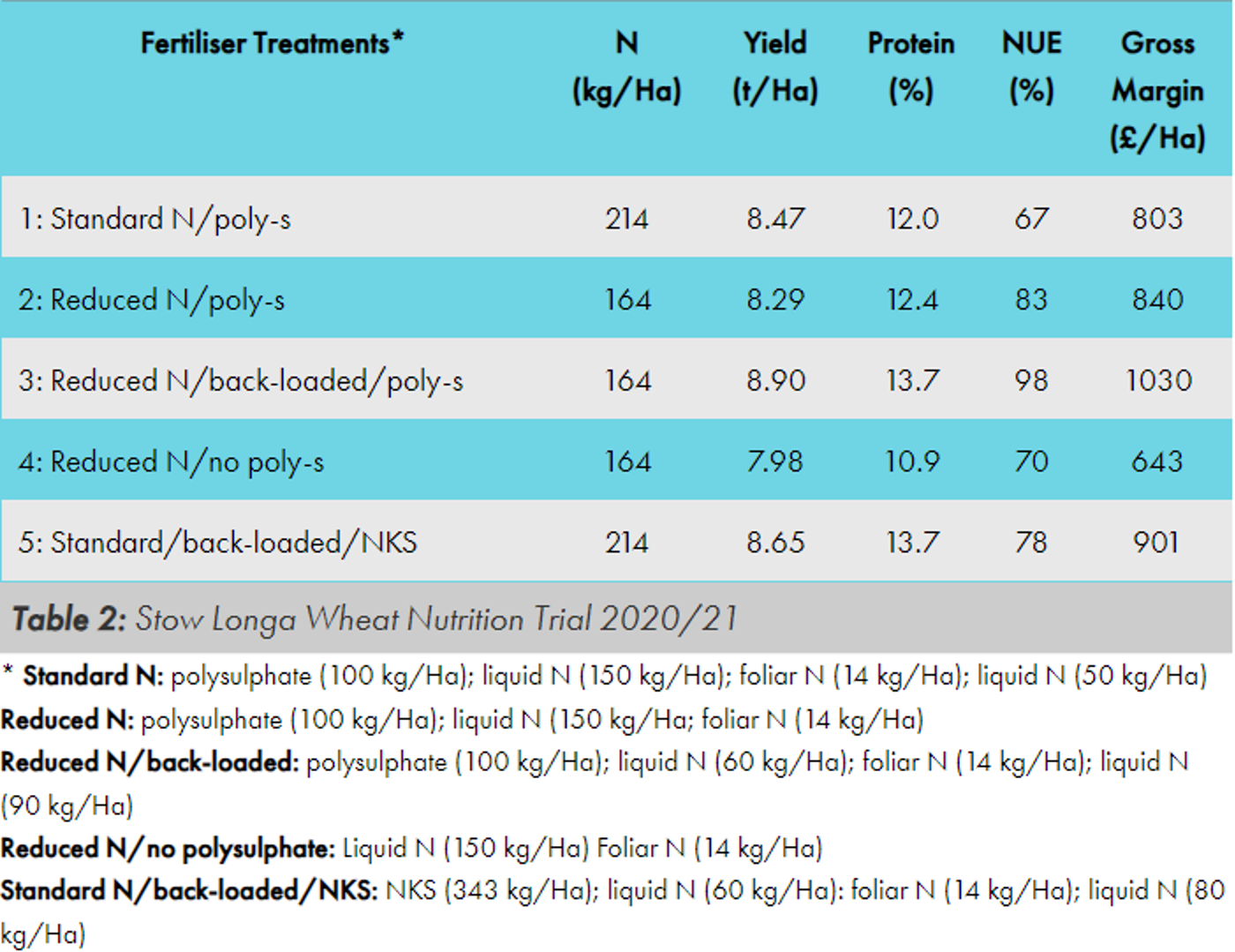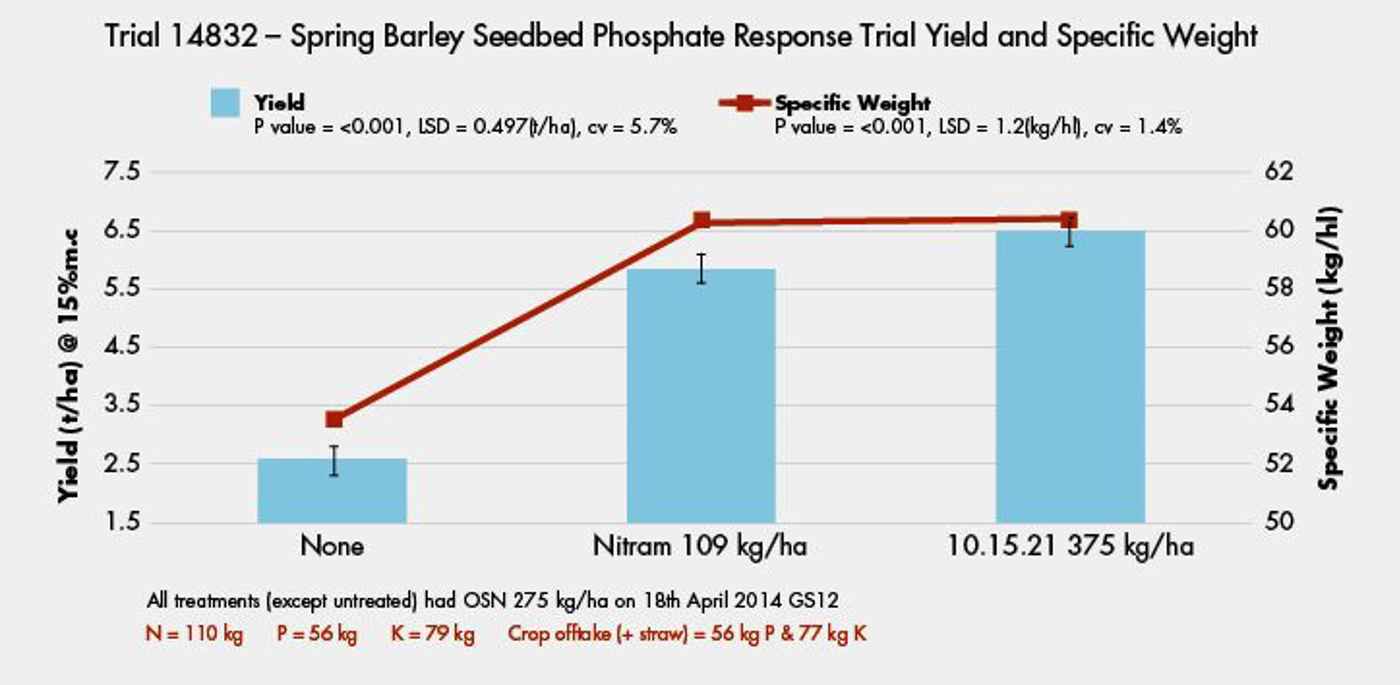
Test soils to identify spring fertiliser requirements
News - 27.03.24
Ensuring crops receive sufficient nutrients this spring need not mean relying on the traditional blends, explains Thomas Perrott, Agrii crop input specialist.
After one of the wettest autumns on record and a similarly wet start to winter, crops are likely to face a nutrient shortfall come the spring.
Crops on lighter soils or those low in organic matter are likely to need more attention but those on heavier soils are likely to face a nutrient shortfall too.
Thomas Perrott, Crop input specialist
Assessing Your Soil Nutrient Needs
- Understand Your Unique Requirements
- Tailoring Fertiliser Solutions to Your Soil
Importance of Soil Testing
- Take Control of Your Soil's Health
- Avoid Over- or Under-Applying Nutrients
Factors Affecting Nutrient Availability
- Learn How Soil Moisture and Chemistry Impact Nutrients
- Managing pH and Cation Exchange Capacity
Nutrient Leaching and Crop Demand
- Recognise Nutrients Prone to Leaching
- Understanding Crop Demand and Environmental Factors
Optimising Fertiliser Application
- Timing Matters: Insights from Trials
- Maximising Yields with Efficient Nutrient Application
The Value of Polysulphate
- Exploring Benefits Beyond Traditional Fertilisers
- Enhancing Crop Nutrition and Environmental Sustainability
Innovative Approaches to Fertiliser Application
- Exploring Starter Fertilisers for Enhanced Yields
- Dispelling Myths and Embracing New Techniques
Summary: Smart Strategies for Nutrient Management
- Simplifying Nutrient Management for Improved Results
- Prioritising Soil Health and Crop Potential

Addressing your situation is likely to require a more detailed focus on applications than you might expect in a typical year, but it need not all come in the form of traditional products derived from a bag.
Bulk product is still the best means of supplying nutrients in large quantity, but there is now a far greater range of products and blends for you to choose from than was the case just five or so years ago.
The ‘Nutri-Match’ service from Origin Fertilisers means you can have a prescription fertiliser containing up to 13 nutrients that is tailored to your exact needs.
Bespoke blends have done much to overcome the limitations of conventional N:P:K:S products. Similarly, the development of protective coatings and liquid inhibitors has also extended the application flexibility to your benefit while the introduction of polyhalite (sold as Polysulphate) has made it easier to meet winter wheat’s seasonal requirement for potassium and sulphur. Polysulphate contains 48% SO3 as sulphate, 14% K2O as from sulphate of potash, 6% MgO as from magnesium sulphate and 17% CaO as from calcium sulphate.
Accepting the reality that there will be changes in nutrient availability and that addressing any deficits is likely to involve greater expense, it makes sense for you to test soils in the early new year.
Only a soil test will give you a true representation of the nutrient status and with this knowledge, you can avoid the expense of over-applying or the loss of yield that would be incurred from under-applying.
In a season such as this year when prolonged wet weather will have affected a soil’s nutrient status, assessing the soil’s true status is likely to be highly worthwhile, even if it is not due to be tested.
Your soil moisture is the principal determinant of nutrient availability, but your soil’s chemical properties also influence availability. Neither pH nor your soil’s cation exchange capacity should be overlooked.
Fortunately, pH is easily managed and while there is little that can be done to affect your soil’s cation exchange capacity, well-maintained field drains will be vital to helping them recover their aerobic capacity.
Nutrients that are leached more readily (see Table 1) are usually those that are less strongly held in the soil on clay particles or organic matter. In general, anions (borate, sulphate or nitrate) leach more easily than cations (potassium, magnesium or calcium), although phosphate is an exception to this.
Your crop demand for phosphate peaks in the late spring to early summer weeks, but availability is affected by a combination of environmental factors and soil properties.
Historically, growers seeking to ensure adequate phosphate availability after a wet winter would have applied up to 80 kg K20 but Agrii trials performed at Stow Longa in the 2020/21 season, indicate that through the use of Polysulphate it is possible to maintain yields with lower-rate applications.

As Table 2 shows, application timing is crucial. Treatment 3 reflects a typical nitrogen programme for quality wheat with applications backloaded. Applying 60 kg/Ha at the first split and 90 kg/Ha on the final one boosted the yield to 8.9 t/Ha, the protein content to 13.7% and gross margin to £1,030/Ha.

The value of the Polysulphate to your programme can be seen in treatment 5 where it was replaced with an NKS blend. Despite providing much more potash than the equivalent backloaded N programme and 50 kg/Ha more N, the average yield was noticeably lower at 8.65 t/Ha, as was the NUE at 78% and margin at £901.
It is perhaps due to the additional magnesium and calcium in Polysulphate, the balance of the nutrients it contains, their sulphate form or a combination of all these factors that makes it a product that seems to deliver more than the sum of its parts. Given the environmental focus on ammonium nitrate this work is of great significance.
Other work has considered the value of a protected phosphate starter fertiliser applied to your seedbed at drilling. A yield response of 3.9 t/Ha over the untreated and 0.63 t/Ha over the ammonium nitrate demonstrated its value (see Figure 1). It also dispels the myth that starter fertilisers must be applied down the spout at drilling.

In summary, managing your crop nutrient requirements this season will undoubtedly be a more considered task than might be expected in a typical year, but there are steps that, if adopted, could save you time, hassle and unnecessary expense.
An N-Min test, for example, will determine what amount of nitrogen remains available to your growing crop helping to ensure that only what is needed is applied. As such, don’t be afraid to have your soils analysed even if it is not due. Similarly, the range of granular and liquid forms of macro and micronutrient products has made it easier than ever to ensure your crops receive the nutrition required to realise their potential.
Field drainage too is equally easy to overlook. It often pays to walk your fields during wet spells to identify areas where poor soil structure or blocked drains may need further attention.
None of this is rocket science, but it’s a classic case of ‘you can’t manage, what you don’t measure’, so it is well worth spending some time assessing the reality of your soil nutrient status.
Join Our Community

Agrii X
We love engaging with clients and partners. Give us a follow and let's share stories for the community.

Agrii Instagram
A picture paints a thousand words. Follow us on Instagram to see what we are up to.

Agrii Facebook
Follow us on the worlds biggest social media site for the latest news and events straight to your feed.

Agrii LinkedIn
If you are all about the business, connect with us on LinkedIn to build your network
Stay In Touch

Journal Sign-Up
Receive email updates on topical news and information from around Agrii and UK Farming.

Listen To Our Podcasts
Listen to the Tramlines Podcast. Fortnightly chat about agriculture and trials with your host Tony Smith.

Agrii Insights
Read essential agri intelligence for profitable farming.

Find an Event
Join us for our upcoming events and tours.



